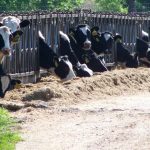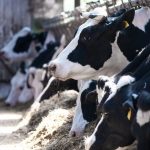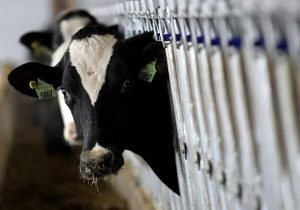
The spread of the Covid-19 virus is having a large impact on prices. Even though dairy may not be directly related, there is concern over the slowing of export demand, not because of lower consumer demand, but slower exports as shipments need to go through more protocols in order to get to the desired locations. This will back up supply into the pipeline and result in lower prices. There have been some reports of food shortages of certain items in some countries due to the inability of products to reach those locations on time.
There is concern developing over the impact this could have on the agricultural workforce if this become more widespread in the U.S. Dairy operations could face a significant risk to their workforce if the virus spreads to the areas where farms are located. This is not likely, but it is something dairy operations need to think about and add to their crisis management plan.
The markets have never gone through something of this potential magnitude and it is difficult to determine just how much impact it could have. Demand should remain the same or even improve, but the supply chain will likely be disrupted for an undetermined period of time. This is taking place at the same time milk production is increasing as spring flush begins.
Milk production per cow continues to improve as dairy farmers strive to get as much milk as possible out of the cows in order to cash flow. Class III milk prices have been better than the previous year since February 2019 with Class IV price better than the previous year since October 2018. This has spurred the desire to push more production and increase cow numbers in some states. There has been a desire by some farms to purchase another farms plant quota or to fill plant space after a farm exits the dairy business. The impact of the coronavirus will make this year very difficult to predict.
Dairy exports have started the year very strong with the total volume of dairy exports in January running 21% higher than January 2019. The total value of those exports showed an increase of 29% to a total of $554.80 million and was the highest amount in 5 years. Most categories showed improvement. Ingredient sales were very strong to Southeast Asia. This resulted in the fifth consecutive month of export volume growth. Bear in mind that these were figures for January before export concern escalated. Continued growth will be key to dairy prices as the year progresses.
Another key area will be the growth of inventory especially in the American cheese category. Last year, American cheese stocks began the year at the highest level and then either remained somewhat sideways or slowly decreased throughout the rest of the year. The result was substantially higher Class III milk prices. I inventory can follow a similar pattern this year, we may see strong milk prices as the year progresses. However, slowing demand resulting in growth of inventory may be detrimental to higher milk prices later in the year. Class IV prices may remain under substantial pressure due to strong growth of butter inventory.
The potential for higher milk prices this year that had been earlier predicted, has now been reduced. The current market situation does not point to a better year. However, much can change over the course of the year.
Robin Schmahl is a commodity broker and owner of AgDairy LLC, a full-service commodity brokerage firm located in Elkhart Lake, Wisconsin. He can be reached at 877-256-3253 or through their website at www.agdairy.com.

























